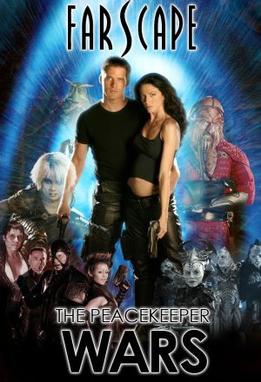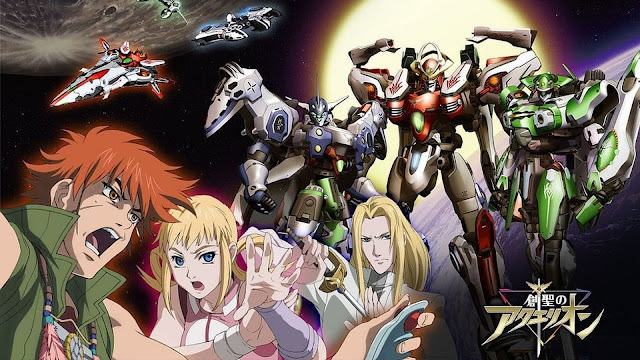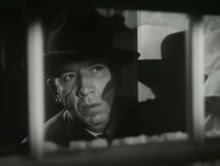PHENOMENALITY: *uncanny*
MYTHICITY: *superior*
FRYEAN MYTHOS: *adventure*
CAMPBELLIAN FUNCTIONS: *psychological, sociological*
SHERIFF: "If you was a moron, you could almost admire [the carnage]."
_________
KIDDO: "Are you calling me a superhero?"
BILL: "I'm calling you a killer. A natural born killer [...] All those people you killed to get to me-- felt good, didn't it?"
___________
Because Quentin Tarantino (henceforth QT) is so well known for his snappy dialogue and mastery of ultraviolent action, many viewers tend to overlook certain other propensities. One such is QT's ability to dramatically shift the perspectives of his apparently simple characters in order to force audiences to make their own evaluations as to how villainous or heroic they may be.
KILL BILL, for all of its signaling to different genres and story-tropes, is first and foremost a revenge-fantasy, a trope-category that transcends genres. The "carnage" referenced in the first quote above takes place when the pregnant Beatrice Kiddo (Uma Thurman) is almost murdered by the titular Bill (David Carradine of KUNG FU fame) and his gang of professional assassins, a level of mayhem that ought to inspire almost anyone to seek bloody vengeance. Yet Kiddo is not the innocent victim seen in most revenge-dramas. She too was one of Bill's killers, and although QT never shows Kiddo plying her trade, she is, as Bill says in the second cited quote, "a natural born killer." The viewer has no way of knowing if Bill is correct, for QT reveals nothing regarding Kiddo's early development, not even supplying any reason as to why she chose the life of an assassin. Her story-arc is all about the future.
Kiddo attempts to leave behind the killer's life in order to make a better life for B.B., the daughter she conceives by Bill. She attempts to fake her own death and to subsume her old life by marrying an ordinary small-town guy. But Bill finds her in the midst of a wedding rehearsal, so he and his top four aides slaughter everyone in the party and almost kill Kiddo. Only one life is deliberately spared, since apparently Bill somehow manages to remove the unborn B.B. from her wounded mother's womb via Caesarian section. But for most of Part I, Kiddo-- who awakens from a coma four years later-- does not know that B.B. still lives. Thus she goes after all those who attacked her and her child, starting with the four top aides before going after Bill himself. Yet the question that Bill will raise in Part 2 is suggested by the events of Part 1: in seeking bloody vengeance, is Beatrix Kiddo even a hero, much less a "superhero?"
Kiddo certainly comes off as heroic compared to the outright villains, though, to be sure, by the time she awakens, two of Bill's top aides have left his service, just as Kiddo intended to. Bill's aide O-Ren Ishii (Lucy Liu) is not only the only character in the film to get a substantial "origin story," she becomes, with Bill's covert help, the queen-pin of the Japanese Yakuza. Yet QT doesn't begin with Kiddo's spectacular assault on O-Ren and her many henchmen. He saves that for the film's climax, while the opening action sequence shows Kiddo ruthlessly track down one of the retired henchwomen, Vernita Green (Viveca A. Fox), now settled down in suburbia with a husband and daughter. Even though the viewer still empathizes with Kiddo, this setup is meant to throw some doubt into the justice of her quest.

Vernita's defeat. though seen first, actually takes place after Kiddo's Japanese adventure, including her acquisition of a fabulous Japanese samurai blade, with which she defeats O-Ren and her gang of henchmen, all of whom wield only swords and seem not to have heard of firearms. Here too, despite the audience's tendency to view Kiddo as a hero, she takes a certain pleasure not only in dismembering many of O-Ren's lackies, but also in claiming ownership of their severed limbs.
Part 2 veers in a different direction. The triumphant Kiddo next goes after the other aide who left Bill's service, Bill's brother Budd (Michael Madsen). Despite possessing only very basic resources, Budd neatly mousetraps Kiddo and consigns her to a living death; that of being stuck in a coffin and buried alive. This leads to a long flashback in which Kiddo thinks back to her training under Bill's previous tutor Pai Mei (Gordon Liu)-- which sequence becomes relevant when the viewer learns that the martial master taught Kiddo a maneuver that gets her free of the coffin. Before Kiddo can take vengeance on Budd, her last hench-foe, Elle Driver (Daryl Hannah) kills Budd-- after which Kiddo vanquishes Elle with a short but intensely violent battle-- thus leaving the heroine's path clear to face her ultimate foe.

Having laid out some of the ways in which Kiddo's vengeance-quest is rendered problematic, I'll refrain from spelling out the encounter of Kiddo and Bill, except to say that Bill gets more than ample time to tell his side of the story, in which Kiddo again doesn't quite come off as spotless, much less an altruist after the examples of American comic-book superheroes.
And yet, QT almost certainly does not mean for the viewer to take Bill's discourse at face value. Bill associates superheroes and natural born killers only on one basis: that both of them exist outside the realm of ordinary people, what Bill calls "worker bees." Kiddo never tries to counter any of Bill's arguments; her sole desire is to avenge her injury by Bill and to reclaim B.B., in order to keep the four-year-old child from being corrupted. (To be sure, even the little girl isn't entirely "innocent" in QT's world, as one learns from the tale of Emilio the Goldfish.)
But although Kiddo's altruism doesn't go beyond her concern for her daughter, her existence is a refutation of Bill's concept of the superhero. Bill makes most of her discourse about Superman, but Kiddo is really Batman. Batman learns the ways of crime to fight crime, and Kiddo learns the ways of death to fight the minions of death. The "worker bees" will never know it, but their world has been made better by the elimination of these evildoers, opening up more possibilities for the future.
All of the principals are excellent in their roles, but of course Uma Thurman and David Carradine take the top honors, with the part of Bill appearing as both a homage and an undercutting of Carradine's classic role of Kwai Chang Caine from KUNG FU. QT's eclectic sampling of musical themes is never less than accomplished, but my particular favorite appears in the Death of Bill, scored with an excerpt from Ennio Morricone's "Return of Joe" from the otherwise unremarkable spaghetti western NAVAJO JOE.





















